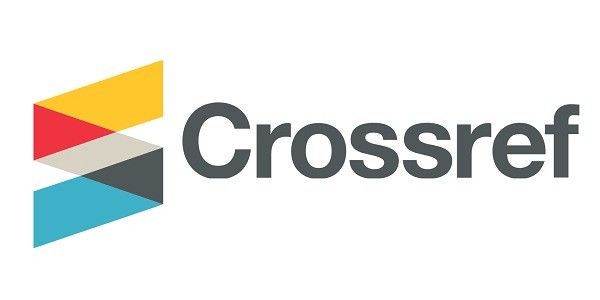Abstract
To understand the relationships between cognitive variables like visual complexity, coherence, and colour contrast in interior spaces, direct numerical analysis is crucial. Conventional approaches are limited due to the brain's struggle to process visual information without cognitive manipulation. However, advancements in artificial intelligence enable direct examinations. This study used a convolutional neural network to assess the intensity of colour contrasts in images of 5-star hotel lobby interiors with high levels of coherence and complexity. The results indicated that visually complex lobby interiors have less warm-cool and dark-light contrast but more pronounced complementary contrast than coherent lobby interiors. Additionally, a negative correlation was identified between complementary and warm-cool contrasts across all perspectives. These results underscore the potential influence of specific colour contrast types on the cognitive experience of interiority.
Publication Date
7-30-2024
References
Agnes, R., & Dsouza, M. (2019). The impact of atmospherics on service quality: A study on the hotel industry in Mangalore. Journal of Applied Management and Advanced Research, 1(1), 13–20.
Alfa, A. A., Misra, S., Yusuf, A., & Agrawal, A. (2023). Comparative analysis of performances of convolutional neural networks for image classification tasks. In Y. Singh, P. K. Singh, M. H. Kolekar, A. K. Kar, & P. J. S. Gonçalves (Eds.), Proceedings of international conference on recent innovations in computing: ICRIC 2022 (Vol. 1, pp. 179–190). Springer.
Alzubaidi, L., Zhang, J., Humaidi, A. J., Al-Dujaili, A., Duan, Y., Al-Shamma, O., Santamaría, J., Fadhel, M. A., Al-Amidie, M., & Farhan, L. (2021). Review of deep learning: Concepts, CNN architectures, challenges, applications, future directions. Journal of Big Data, 8, Article 53, 1–74. https://doi.org/10.1186/s40537-021-00444-8
Bakhtiari, S., Awada, A., & Pack, C. C. (2020). Influence of stimulus complexity on the specificity of visual perceptual learning. Journal of Vision, 20(6). https://www.ncbi.nlm.nih.gov/pmc/articles/PMC7416884/
Barrett, L. F. (2017). The theory of constructed emotion: An active inference account of interception and categorization. Social Cognitive and Affective Neuroscience, 12(1), 1–23. https://doi.org/10.1093/scan/nsw154
Beka, R., & Cenko, E. (2019). How does the way we design hotels influence consumer brand experiences. Hospitality & Society, 9(3), 331–348.
Cho, J. Y., & Lee, E.-J. (2017). Impact of interior colors in retail store atmosphere on consumers' perceived store luxury, emotions, and preference. Clothing and Textiles Research Journal, 35(1), 33–48. https://doi.org/10.1177/0887302X16675052
Cho, J. Y., & Suh, J. (2020). Spatial color efficacy in perceived luxury and preference to stay: An eye-tracking study of retail interior environment. Frontiers in Psychology, 11, Article 296. https://doi.org/10.3389/fpsyg.2020.00296
Countryman, C. C., & Jang, S. (2006). The effects of atmospheric elements on customer impression: The case of hotel lobbies. International Journal of Contemporary Hospitality Management, 18(7), 534–545. https://doi.org/10.1108/09596110610702968
Demir, G., Çekmiş, A., Yeşilkaynak, V. B., & Unal, G. (2021). Detecting visual design principles in art and architecture through deep convolutional neural networks. Automation in Construction, 130, Article 103826. https://doi.org/10.1016/j.autcon.2021.103826
Deng, X., Hui, S. K., & Hutchinson, J. W. (2010). Consumer preferences for color combinations: An empirical analysis of similarity-based color relationships. Journal of Consumer Psychology, 20(4), 476–484. https://doi.org/10.1016/j.jcps.2010.07.005
Elavarthi, P., Lee, J., & Ralescu, A. (2023). On the ability of CNNs to extract color invariant intensity-based features for image classification. ArXiv, Article 2307.06500. https://doi.org/10.48550/arXiv.2307.06500
Farboud, S. S., & Shahhoseini, H. (2020). Historical Caravanserai's interior design criteria based on visual preference of travelers. International Journal of Architectural Engineering & Urban Planning, 30(2), 255–264. http://ijaup.iust.ac.ir/article-1-509-en.html
Gaudiot, D. M. S., & Pernão, J. (2020). The contribution of the built environment to the success of learning: The role of colour in the ergonomics of educational spaces. In J. Charytonowicz (Ed.), Advances in human factors in architecture, sustainable urban planning and infrastructure: Proceedings of the AHFE 2020 virtual conference on human factors in architecture, sustainable urban planning, and infrastructure, 16–20 July, 2020, USA (pp. 168–174). Springer. https://doi.org/10.1007/978-3-030-51566-9_23
Geng, Z., Le, W., Guo, B., & Yin, H. (2023). Analysis of factors affecting visual comfort in hotel lobby. PLoS ONE, 18(1), Article e0280398. https://doi.org/10.1371/journal.pone.0280398
Guo, Y., Liu, Y., Oerlemans, A., Lao, S., Wu, S., & Lew, M. S. (2016). Deep learning for visual understanding: A review. Neurocomputing, 187, 27–48. https://doi.org/10.1016/j.neucom.2015.09.116
Huang, H.-T., & Tsaih, L. S.-J. (2022). Prioritizing hotel lobby design factors: Perspectives of hotel operators in China. Journal of Asian Architecture and Building Engineering, 21(5), 1801–1813. https://doi.org/10.1080/13467581.2021.1966016
Itten, J. (1970). The elements of color (4th ed.). John Wiley & Sons.
Jang, J. Y., Baek, E., & Choo, H. J. (2018). Managing the visual environment of a fashion store: Effects of visual complexity and order on sensation-seeking consumers. International Journal of Retail & Distribution Management, 46(2), 210–226. https://doi.org/10.1108/IJRDM-03-2017-0050
Julmi, C. (2022). Servicescape concept in the cultural and creative sectors. In Y. Jung, N. Vakharia, & M. Vecco (Eds.), The Oxford handbook of arts and cultural management (pp. 497–520). Oxford University Press. https://doi.org/10.1093/oxfordhb/9780197621615.013.29
Kaplan, R., & Kaplan, S. (1989). The experience of nature: A psychological perspective. Cambridge University Press.
Kaplan, R., Kaplan, S., & Ryan, R. (1998). With people in mind: Design and management of everyday nature island press. Island Press.
Kraus, M. (2019). Color as a psychological agent to perceived indoor environmental quality. IOP Conference Series: Materials Science and Engineering, 603(5), Article 052097. https://doi.org/10.1088/1757-899X/603/5/052097
Kumar, D. S., Nair, K. U., & Purani, K. (2023). Servicescape design: Balancing physical and psychological safety. Marketing Intelligence & Planning, 41(4), 473–488. https://doi.org/10.1108/MIP-06-2022-0259
Kwallek, N., Soon, K., & Lewis, C. M. (2007). Work week productivity, visual complexity, and individual environmental sensitivity in three offices of different color interiors. Color Research and Application, 32(2), 130–143. https://doi.org/10.1002/col.20298
Lin, I. Y. (2004). Evaluating a servicescape: The effect of cognition and emotion. International Journal of Hospitality Management, 23(2), 163–178. https://doi.org/10.1016/j.ijhm.2003.01.001
Manav, B. (2013). A research on light-color perception: Can visual images be used instead of 1/1 model study for space perception? Psychology, 4(9), 711–716. https://doi.org/10.4236/psych.2013.49101
Mascarenhas, S., & Agarwal, M. (2021). A comparison between VGG16, VGG19 and ResNet50 architecture frameworks for image classification. In 2021 International conference on disruptive technologies for multi-disciplinary research and applications (CENTCON) (Vol. 1, pp. 96–99). IEEE. https://doi.org/10.1109/CENTCON52345.2021.9687944
Minah, G., & Nemcsics, A. (2015). Environmental color design. In R. Luo (Ed.), Encyclopedia of color science and technology (pp. 637–644). Springer. https://doi.org/10.1007/978-1-4419-8071-7_235
Naqshbandi, M., & Munir, R. (2011). Atmospheric elements and personality: Impact on hotel lobby impressions. World Applied Sciences Journal, 15(6), 785–792. http://dx.doi.org/10.2139/ssrn.2361143
Paxton, J. (2006). The preference matrix as a course design tool. In A. Berglund & M. Wiggberg (Eds.), Baltic Sea ‘06: Proceedings of the 6th Baltic Sea conference on computing education research: Koli calling 2006 (pp. 124–127). Association for Computing Machinery. https://dl.acm.org/doi/10.1145/1315803.1315826
Phiphiphatphaisit, S., & Surinta, O. (2020). Food image classification with improved MobileNet architecture and data augmentation. In F. Meziane & A. Balinsky (Eds.), Proceedings of ICISS ‘20: 3rd International conference on information science and systems (pp. 51–56). Association for Computing Machinery. https://dl.acm.org/doi/10.1145/3388176.3388179
Qassim, H., Verma, A., & Feinzimer, D. (2018). Compressed residual-VGG16 CNN model for big data places image recognition. In 2018 IEEE 8th annual computing and communication workshop and conference (CCWC) (pp. 169–175). IEEE. https://doi.org/10.1109/CCWC.2018.8301729
Rezakolai, S. A., Samadi, D., & Tabatabaian, M. (2015). Analysis of Persian gardens using Kaplan's landscape preference theory (Case study: Fin Garden, Shazdeh Mahan Garden, Eram Garden, & El Goli Garden). International Journal of Architectural Engineering & Urban Planning, 25(1), 6–20. https://doi.org/10.22068/ijaup.25.1.6
Saniei, T. (2024). CUP–Convolutional Neural Network training dataset. Mendeley Data, 3. https://doi.org/10.17632/7md9bgd4tg.3
Shapley, R., Nunez, V., & Gordon, J. (2019). Cortical double-opponent cells and human color perception. Current Opinion in Behavioral Sciences, 30, 1–7. https://doi.org/10.1016/j.cobeha.2019.04.001
Shiau, W. L., Shi, P., & Yuan, Y. (2021). A meta-analysis of emotion and cognition in information system. International Journal of Enterprise Information Systems (IJEIS), 17(1), 125–143. https://www.igi-global.com/article/a-meta-analysis-of-emotion-and-cognition-in-information-system/268366
Tang, H., Lu, X., Su, R., Liang, Z., Mai, X., & Liu, C. (2017). Washing away your sins in the brain: Physical cleaning and priming of cleaning recruit different brain networks after moral threat. Social Cognitive and Affective Neuroscience, 12(7), 1149–1158. https://doi.org/10.1093/scan/nsx036
Von Meiss, P. (2013). Elements of architecture: From form to place. Routledge.
White, A. W. (2011). The elements of graphic design: Space, unity, page architecture, and type (2nd ed.). Allworth Press.
Wilms, L., & Oberfeld, D. (2018). Color and emotion: Effects of hue, saturation, and brightness. Psychological Research, 82(5), 896–914. https://doi.org/10.1007/s00426-017-0880-8
Witzel, C., & Gegenfurtner, K. R. (2018). Color perception: Objects, constancy, and categories. Annual Review of Vision Science, 4, 475–499. https://doi.org/10.1146/annurev-vision-091517-034231
Xylakis, E., Liapis, A., & Yannakakis, G. N. (2021). Architectural form and affect: A spatiotemporal study of arousal. In 2021 9th International conference on affective computing and intelligent interaction (ACII) (pp. 1–8). IEEE. https://doi.org/10.1109/ACII52823.2021.9597420
Zadra, J. R., & Clore, G. L. (2011). Emotion and perception: The role of affective information. WIREs Cognitive Science, 2(6), 676–685. https://doi.org/10.1002/wcs.147
Zhang, G., Yang, J., & Jin, J. (2021). Assessing relations among landscape preference, informational variables, and visual attributes. Journal of Environmental Engineering and Landscape Management, 29(3), 294–304. https://doi.org/10.3846/jeelm.2021.15584
Submitted Date
2023-06-21
Accepted Date
2024-05-29
First Page
175
Last Page
198
Recommended Citation
Saniei, T., Kianersi, M., & Fekri-Ershad, S. (2024). Assessing Relations Among Visual Variables in Hotel Lobbies Using Deep Learning. Interiority, 7 (2), 175-198. https://doi.org/10.7454/in.v7i2.351
Creative Commons License

This work is licensed under a Creative Commons Attribution-NonCommercial 4.0 International License
Author(s) retain the copyright of articles published in this journal, with first publication rights granted to Interiority.







